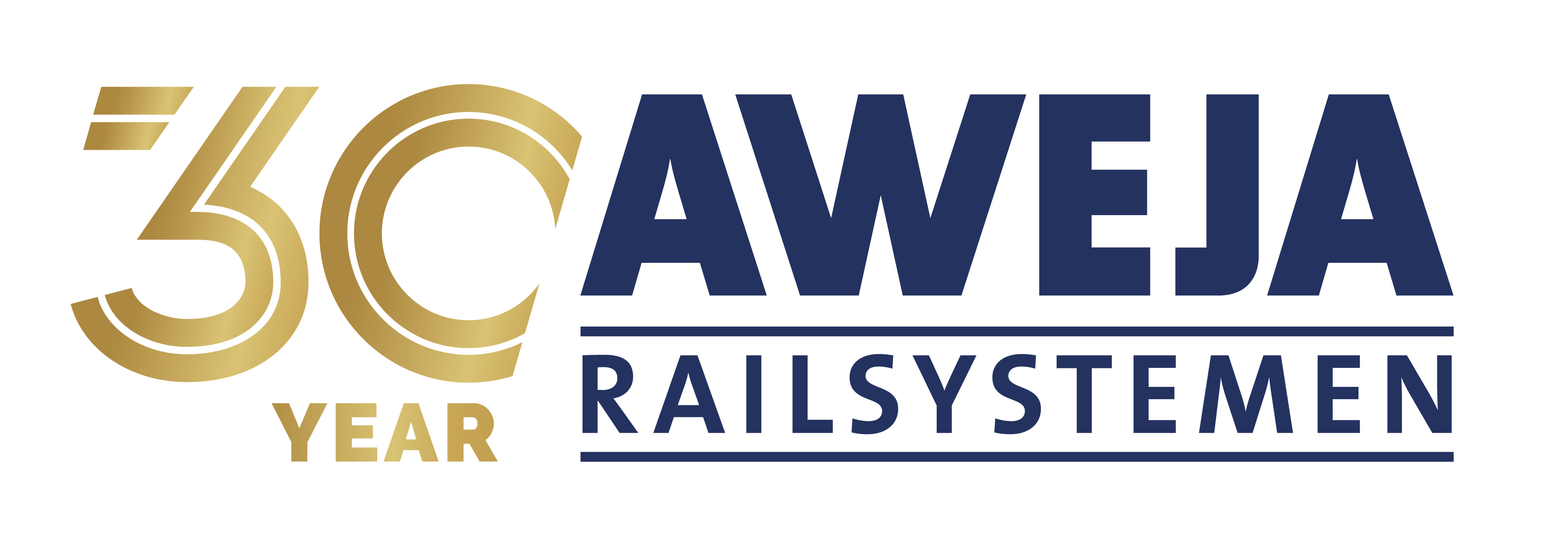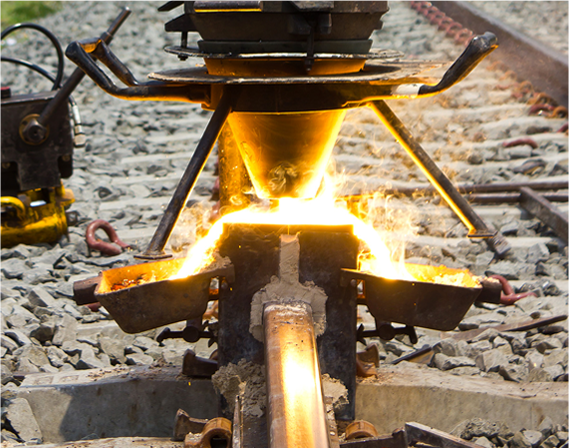In order to produce a proper joint, the rails must be properly aligned, the mould must be tightly sealed and the joint must have cooled down sufficiently before it is put under a load.
The welding process can be broken down into the following steps:
- Alignment of the tracks or rails;
- Fitting of a ceramic mould around the joint and sealing all cracks and holes with sand or paste to keep the molten steel in place;
- Preheating the tracks or rails using blowtorches until they are red hot (900°C);
- Placing the thermite portion in the crucible above the joint;
- Igniting the thermite portion in the crucible;
The reaction then lasts a few minutes. As the reaction reaches temperatures in excess of 2500°C, the molten steel flows into the joint between the rails in the mould. The aluminium oxide slag remains floating on top of it (this prevents the hot steel from oxidising) and is collected in slag basins positioned on each side of the joint;
- Once the joint has cooled down, the reaction vessel and mould are removed;
- The welding burr is cut off and ground down in accordance with the applicable standards.

